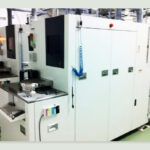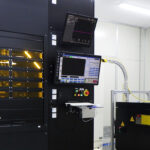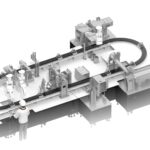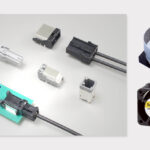ASIA ELECTRONICS INDUSTRYYOUR WINDOW TO SMART MANUFACTURING
Alliances Make New Marks in Manufacturing Techniques
The manufacturing sector has recently seen huge success of monodzukuri (Japanese term for manufacturing) through collaboration between and among the industry, government, and the academe. In the electronics industry, initiatives that strengthen new technology development and manufacturing to win global competition has been increasingly necessary.
These initiatives make collaborations among these institutions vital in various fields, including in laser processing, semiconductors, and robots.
Laser processing of metals without contact by applying laser beams attracts attention, and the use of laser processing has been increasing in various manufacturing sites. In the electronics industry as well, application of laser processing has been expanding to the formation of fine through holes in glass for electronic circuit boards, and the micromachining of information communication equipment and components for medical equipment.
From FY2016 to FY2020, the New Energy and Industrial Technology Development Organization (NEDO) spearheaded a project titled Development of Advanced Laser Processing with Intelligence Based on High-Brightness and High-Efficiency Next-Generation Laser Technologies (TACMI Project). Thirteen corporate bodies, including the National Institute of Advanced Industrial Science and Technology (AIST), The University of Tokyo, Osaka University, Mitsubishi Electric Corporation, Hamamatsu Photonics K.K., Panasonic Corporation and Shimadzu Corporation participated in the TACMI Project. They have concentrated leading-edge laser light sources, processing machines and process technologies developed under the project to AIST Kashiwa in Kashiwa II Campus, The University of Tokyo in Kashiwa, Chiba Prefecture. The operation of AIST Kashiwa started in Feb. 2021.
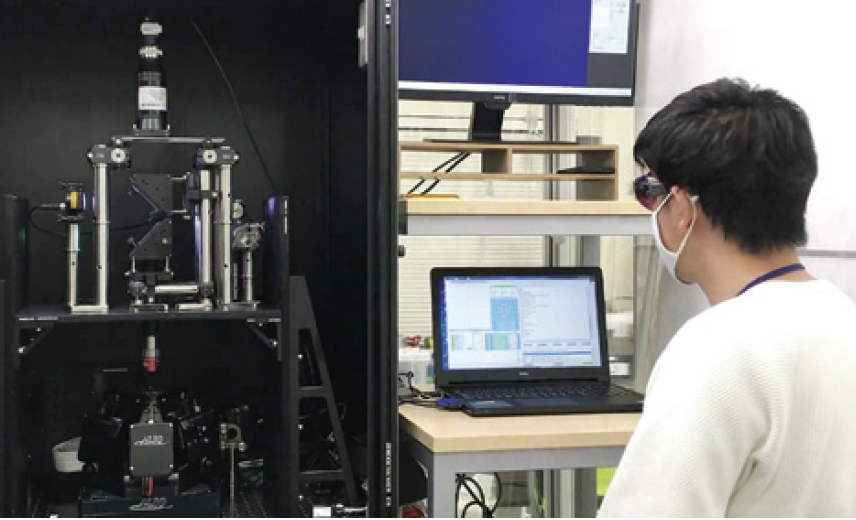
Operated as an open platform, it allows users of laser processing to use leading-edge laser light sources and laser processing machines for prototype evaluation and other purposes. It is also possible to verify applicability of products using concentrated laser technologies, common basic technologies and database. Through wide use of the platform, the member organizations aim to strengthen Japan’s competitiveness in the laser processing field.
Results in Prototyping of MEMS
In the semiconductor field, MicroNano Open Innovation Center (MNOIC) in AIST in Tsukuba, Ibaraki Prefecture, an open hub for prototyping of microelectromechanical systems (MEMS) operated by Micromachine Center, plays an important role as a pioneer of industry, government and academia collaboration.
Micromachine Center has promoted an array of technology research and development projects led by the state and NEDO by orchestrating the capabilities of industry, government and academia to establish basic technologies in the nanomicro field, including micromachines and MEMS.

MNOIC celebrated the 10th anniversary of its founding in April. It is installed with the latest 8- and 12-inch MEMS integrated process manufacturing lines from wafer cleaning to deposition, lithography, etching, joining process to machining evaluation. It can prototype MEMS. It is also installed with a through silicon via (TSV) development facility, which supports 12-inch wafers.
As MEMS spreads to new markets, such as internet of things (IoT), health and medical care, autonomous driving and robots, the use of MNOIC has been increasing year after year. It has been in full operation, receiving contracts for more than 80 cases of research and process yearly, including research support, and research contract, as well as research and prototyping, and small-lot production of MEMS from venture companies, universities, and semiconductor companies.
Robotics Human Resource Development
In the robotics field, The Consortium of Human Education for Future Robot System Integration (CHERSI) was established in June 2020 with the purpose of nurturing human resources through industry, government, and academia collaboration targeting the development of human resources specialized in robotics for the future. The CHERSI is led by the Ministry of Economy, Trade and Industry, and has the Japan Robot Association (JARA); robot manufacturers, such as Kawasaki Heavy Industries, Ltd., Denso Corporation, FANUC Corporation, NACHI-FUJIKOSHI CORP., Mitsubishi Electric Corporation, and Yaskawa Electric Corporation; and Japan Factory Automation & Robot System Integrator Association, as members.
CHERSI provides latest trends of robot technologies to specialized vocational high schools, industrial high schools, and other educational institutions; organizes workshops; works to develop human resources that will play important roles in the development of robots; and espouses system integration under the all-Japan system.
While industry-university collaborations advance, some manufacturing companies are advancing collaborations through open innovation of original technologies. NITTOKU Co., Ltd. has expanded its business as a manufacturer of winding machines and has been manufacturing Linear Index Transfer system (LITs) for production lines in-house by leveraging winding and element technologies and experience the company has nurtured over many years. LITs is a modular conveyor transfer system for production lines and adopts a linear motor. It can be used as variable-mix, variable-volume production and in specialized mass production lines through combination with various production equipment, such as SCARA robot, multi-axis articulated robot, dispenser, and vision system.

NITTOKU has collaborated with diverse companies with the LITs transfer system as the base. Thus far, the company has provided the LITs system as a production system for electric vehicle (EV) motors, thermistor chips, and appearance inspection systems; as well as for the assembly of components for touch pads, automotive connector components, and camera modules; sticking of medical specimen labels; and speaker coil winding.

